Don’t Tell Your Kids: Chewing Gum May be Good for You
An 8000-year-old wad of gum tells us that gum chewing has been a part of human development from earliest times. But is it healthy?
- story by Christina Richardson, PhD Rum Kitchen
Chappy, whose original seafood restaurant opened in Long Beach in 1984, said that Hurricane Katrina “completely uprooted” his life and that he’s thrilled to finally be back home in Waveland. “I’m trying to get back to my life that I love so much,” he said. Not one to look back, Chappy said, “I’m trying to move ahead with new ideas, fresh ideas.”
The Caribbean flair is found throughout the dining area and even into the ladies’ room, where leftover wood takes an artistic turn. Chappy credits his wife Starr and his sister, New Orleans artist Connie Chapman, for pulling together all the pieces and parts to give the restaurant its tropical look. The taste, though, is what keeps customers coming back, like the starter choices to share with the table: avocado mango dip, seafood hushpuppies and Yea Mon Nachos (pulled pork, black beans, jalapeños, tomatoes, red onion, lime cream, cilantro, and tons of melted cheese).
Tacos with fish and various fillings are on menus everywhere these days but at Rum Kitchen the Off the Grid tacos come in some unique iterations. Choose beef, seafood, lamb, chicken, duck, pork, and vegetarian, all served on 4-inch corn tortillas.
The brisket has big flavors accented by BBQ sauce, cilantro, and crunchy fried shallots. Flavorful Jerk Chicken is sweetened with mango salsa. The popular Miss Queen doubles down with pulled pork, jalapeño salsa, spicy and vinegary BBQ sauce and roasted corn relish. Tacos come in twos, threes and fours with one or two sides. Coconut mango rice is a pleasant sweet surprise, light and flavorful. The Callaloo-smothered greens got raves on two lunch outings. Also available are sweet potato fries, black beans with chorizo, grilled asparagus and mashed potatoes.
The sandwiches-and-burgers menu includes the standout ground chuck burger and the grilled mahi mahi with creole seasoning. Both drew raves recently from lunch customers.
The Me Hearty Plates offer even more innovative choices, like braised lamb in a tomato curry, grilled chicken with the restaurant’s signature sauce, red curry shrimp, ribs and a char gilled ribeye with garlic chutney. Mahi Mahi, jerk chicken and brisket are found into the salad selections, too. For dessert, dig into the Bahama Mama bread pudding, made fresh daily, or Key lime pie, among other decadent selections. Go ahead. Pretend you’re on vacation. Rum Kitchen is open daily from 11 a.m. to 10 p.m., serving lunch and dinner. There is a full bar. Call 228-467-9099. Waveland's Ground Zero Museum Under New Director
A place that honors the survivors and volunteers who experienced the wrath and the aftermath of the most destructive hurricane in American history.
- story and photos by Ana Balka

If one did not take a close look at these, one might assume they were a post-Katrina gesture from a quilting society somewhere, but no: these are all the work of master quilting artist Solveig Wells, who had homes in Canada and Bay St. Louis and who completed these all from salvaged fabrics over 16 months in 2006-’07. Wells’ husband David donated the exquisite collection to the museum following Solveig’s death in 2013.
Museum volunteer and Waveland resident Carol Kerr says that in the weeks since the museum’s reopening visitors have reacted positively and sometimes emotionally to the museum’s collection of photos, art, and artifacts, which paint a distinctive portrait of Waveland before, during, and after Katrina.
Carol showed me the auditorium, where local students in Waveland’s M.A.P. (Music, Arts & Practicality, a non-profit enrichment program providing free theater and choir experiences for area students) summer theater camp have been rehearsing “The Lion King” for presentation on the auditorium stage July 16-17.
This is a facet ofnew director Kathy Pinn’s long-range vision for the Ground Zero Museum building as a gathering place: a place that builds community, as well as being a center for learning about the storm, about Waveland history, and about what makes Waveland such a special place. Pinn has long fostered community in Waveland. A former president of both the Coleman Avenue Coalition and the Waveland Community Coalition (and incidentally a M.A.P. co-founder), Pinn and her husband Ron are moving back to Waveland after five years in Illinois specifically to get back to the home they love, and for Kathy to assume her role as museum director. Pinn says that the dozens of museum visitors in its first month have included residents of 15 other states, some who had never been to the area, some post-Katrina volunteers. For locals, touring the museum can be cathartic. “Seeing the waterline, seeing the pictures on the wall, then the H.C. Porter exhibit, it’s very moving,” Pinn says. “Backyards and Beyond” is a multimedia exhibit by artist H.C. Porter and collaborators Karole Sessums and Gretchen Haien. Porter and Sessums photographed and recorded hundreds of Mississippians in the year following Katrina, creating a nationally touring exhibit that features Porter’s mixed media paintings and accompanying audio in which the portraits’ subjects express the reality of displacement and loss through their own stories.
Ground Zero’s Porter exhibit, sponsored by Mississippi Power, contains eight of the paintings, with audio guides. The floor is covered in photo-printed tiles that together comprise a life-sized portrait of the slabbed remains of a Waveland home.
The room feels chapel-like, bringing human shape to the unspeakable. I can see how it might uncover long-buried emotions in those who survived the storm.
“All of that is sometimes a little overwhelming,” Pinn says, “But then we go into the Waveland room.”
Many displays in the Waveland Room represent steps toward healing. There are binders with hundreds of handwritten, individual “Storm Stories” by survivors that visitors can thumb through, and throughout the room there are photo collages, quilts, signed shirts, and other outpourings of love from well-wishers and volunteers around the country. A large cardboard “Gratitude Tree” stands covered in names and quotes. I photograph volunteer Carol next to her own words about home being wherever she is, because she cannot go home. In a corner, an assemblage by mixed media artist Lori Gordon depicts the clothes that hung from trees after the storm.
The room also contains historical artifacts: one wall is festooned with hand-painted versions of Boy Scout merit badges from the days Scouts held meetings in that very room in the ’50s, as well as photos of students, teachers, and sports teams from Waveland Grammar School days in the ’30s and ’40s. A glass case contains memorabilia from hurricane Camille.
A somewhat surreal herd of carousel animal figures gallop, hop, and swim at the back of the room, but that is part of the museum’s evolving nature. The Port Townsend (Washington) Carousel Association donated the Carousel of the Olympic Sea, an original by Bill Dentzel of the Denztel family of carousel makers, to Waveland after Katrina. Its size prohibits assembly in the museum building, so while the carousel has a permanent home at the museum, its location has yet to be defined.
Pinn knows that visitors will come away from the museum experience with a positive awareness of all that Waveland is and has achieved: “I’d like people to understand that part of it: It happened, we got through it, and now look at us.”
Be A Tourist in Waveland!
In this five part series, Hancock County Tourism Bureau is highlighting our communities and some of the unique activities for visitors and also locals. This month we feature Waveland.
- photos by Ellis Anderson, Ana Balka, Prima Luke Waveland
Waveland was originally part of old Shieldsboro (which later became Bay St. Louis), and was known as Montgomery Station and Grand Bend before attaining a charter to become a separate municipality with a mayor and board of aldermen in 1888.
From the beginning, it was a resort town and many New Orleans residents had summer homes here. Today, Waveland is the only city on the Gulf Coast that prohibits commercial buildings on the beachfront, preserving its hometown feeling. Parks, Piers and Hurricanes:
|
|
Summer on the Mississippi Gulf Coast. Perhaps you’ve been sitting outside recently, enjoying the fresh salt air, sipping a cold beverage, and watching the wheeling sea birds and the crabs and other sea creatures skedaddling about in the sand.
If you live here, then this is very probably why you live here. If you’re visiting, then it’s an experience that you will want to hold and treasure long after you return home. If you’re looking for ways to capture the essence of the Gulf Coast and bring it indoors into your home, your first stop should be the Bonner Collection. As soon as you step inside the shop, you are surrounded by items that celebrate life on the Coast. |
Arts Alive column
|
The Bonner Collection Art Gallery contains the studio of well-known artist Jim Bonner, and is the primary outlet for his watercolor paintings and prints. Owned by Bonner and his wife Patsy, it also contains an expansive retail space showcasing home décor, jewelry and gifts, and featuring the work of several other local artists.
The gallery was first opened in Pass Christian in 1996, moved to Old Town Bay St. Louis in 2003, moved to uptown New Orleans in 2006 after Hurricane Katrina, and in 2013 finally returned to its Gulf Coast home.
Originally from Meridian, Mississippi, Jim Bonner hails from the heyday of the advertising era in the ’70s in New Orleans. He’s the guy who designed the iconic Barq’s root beer can, the Crystal hot sauce pepper logo, and the original New Orleans Jazz NBA basketball team logo, among many others, some of which are available as prints at his studio.
Jim also accepts commissions, and is particularly talented at painting pet portraits that seem to perfectly capture the spirit and sensibilities of these quirky cats and dogs so beloved by their owners. He’s even painted Bay St. Louis’s own Lucy!
Jim’s wife Patsy manages the retail side of the operation, collecting and displaying unique coastal-style gifts, home decor, antiques, new and vintage jewelry, and fun beach fashion like colorful bags, hats and scarves. Alligators and herons adorn delicate boxes made of capiz seashells. Dinnerware, hand towels, lamps and pillows prominently feature crabs and other sea motifs.
Patsy says that the NOLA couture line that she carries is especially popular, with its neckties, dog collars, and key chains sporting alligators, cocktail glasses, fleur de lis, or red beans and rice. She also carries the original art pieces of a number of local clay artists, jewelers, and mixed media artists.
The Bonner Collection Art Gallery is conveniently located in the French Settlement building at 108 South Beach Boulevard, steps away from the Bay St. Louis Harbor. Open Tuesday to Saturday from 10:30 a.m. to 5 p.m., and on Sunday and Monday afternoons “by chance.”
Many of Jim’s paintings, as well as some of their retail goods, can be viewed at their website at www.thebonnercollection.com.
Parrot Love
- by Daisy Mae Delray, columnist and registered seizure alert dog
|
I’d like to introduce you to a couple of new friends of mine. This gorgeous Blue-Fronted Green Amazon Parrot goes by the name of Handsome Jack.
|
Puppy Dog Tales
|

Both of these birds lived in Georgia. When their owner Raymond died unexpectedly in December 2015 they moved here to Mississippi to live with Mark and Lael Butler. Mark is Raymond’s brother so Mark and Leah had known the boys for more than 15 years.
Mark told me that it hasn’t been easy for him and Lael, or the parrots — or their three dogs. First, the physical reality of moving them from Georgia to Mississippi, the very strangeness of a new home with large and loud dogs, and Mark and Lael as newbie parrot parents. But they say it has been a rewarding journey despite the challenges.
“Although we’ve known the birds for 15-plus years, it is really different to be their caretaker, providing fresh fruit and veggies, two per day along with fresh water and seeds, fresh paper in their individual crates as well as the floor of their brand new aviary. In the living room, no less!” Mark told me.
I know there are lots of parrots around, and I did some research. Did you know that there are 372 species of parrots? They are mostly tropical, subtropical and come from areas of South- and Central America, Asia, Africa, Australia and New Zealand. Species include: Macaws, Amazons, Keas, Kakas, Lorikeets, Parakeets, Love Birds and Cockatoos. Because of their beauty and intelligence, parrots are one of the most popular pets in the world.
Humans learn a great deal by studying parrots. Dr. Irene Pepperberg conducted a 30-year study on parrots with her first hero parrot, Alex. She wrote about her study in the book “Alex and Me: How a Scientist and a Parrot Discovered a Hidden World of Animal Intelligence — and Formed a Deep Bond in the Process.”
|
Back to our friends Handsome Jack and Teddy Boy. Mark told me about the evening routine.
“Fast forward to the end of day ritual, and you’re exhausted, but the aviary needs cleaning because the boys chew wood and toss food; the water and seed mix needs refreshing and you’re thinking of a large donation to the Audubon Zoo along with two parrots. … that’s when Handsome Jack says ‘nite-nite buddy’ followed quickly by ‘see you in the morning.’ And you melt, and say it right back with a tear and catch in your throat. Raymond loved his birds and they loved him and now I feel they love us too.” Mark tells me that each day is a treasure, the boys learning more words and phrases in English and other languages. They already speak Korean and understand some Spanish. |
To learn more about these wonderful birds and how they have bonded with humans please check out these websites:
National Geographic Parrot page
ParrotParrot Species Guide
Gentle readers, keep your tail high and your feet dry.
Love, Daisy Mae
Martha Whitney Butler + Wesley Lucas Debenport
Ceremony Took Place: Christ Episcopal Church
Reception: Bay-Waveland Yacht Club
Wedding Planner: French Potager
Photographer: Ann Madden Photography and Design
Places Couple Registered: Neiman Marcus, Bay Life, Gourmet Galley, and Picket Fence
Invitations: Pond Switch Press. Letterpress by artist Vicki Niolet with help from bride and friends. All invitation addresses were done by a local calligrapher and wax sealed by the bride.
Calligraphy: Noel Allen. This was one of my favorite things about my wedding. Not only did I learn a new art form, Vicki taught me how to use her antique Chandler-Price letterpress machine, as well as her industrial paper cutter. I loved walking away from that experience with a new skill under my belt. She even let me bring friends to help run the press! It was one of the coolest things I got to do for my wedding.
Bay-Waveland accommodations for wedding party: Abode Guest House and local rentals
Bridal Luncheon: Christ Episcopal Church
Rehearsal Dinner: Christ Episcopal Church, catered by Bacchus on the Beach
Hair: Keith Alexander/Mane Salon
Makeup: Renewing Touch Therapies
Florals: French Potager
At the Water's Edge
|
My earliest memories are from Gulf Shores, and the Gulf of Mexico. In the late 1950s and early 1960s, the charming resort town was still a quiet retreat from the cities. Traditional coastal homes — new or old — faced the Gulf as waves crashed during the tidal changes. My grandparents owned a pleasant beach house painted bright white with green storm shutters.
The drive to Gulf Shores from Mobile was an adventure in itself. We traveled through the Bankhead Tunnel and across the Causeway to Baldwin County. The landscape changed as we drove further south. |
The Shoofly Column
|
Mornings started as soon as the sun rose. My grandfather headed out to the town pier with his pole, bait, and high expectations. A quick drive with Mom to one of the small groceries on the island set us up for breakfast and lunch. We knew we would have fried fish for dinner whether it came from Papa’s catch or the local fish market.
Small, slightly faded photographs taken with my grandfather's Brownie camera show us tanned and cheerfully playing in the water. My grandfather, a jovial bantam rooster of a man, would sit in the shallows and guard over us while Mom and my grandmother prepared dinner of the special coastal kind.
The treat of treats for us as small children was to go out into the water and sit on the sandbars. Small crabs would rush away as we chased them. When my brother was just a toddler, he would declare in his baby language that it was Tide soap that made the water foam. We squealed with delight for an hour or more until my mother or grandmother called us in for a mid-afternoon dinner, and then short naps were taken by all.
At nightfall, there were only a few spotlights on the main road and neighboring vacation homes. Inside our house, the low murmurs of bridge bids and whispered calls for more bourbon and coke, along with the light from the kitchen, pushed back the coming darkness. Restless and still excited from the day’s activities, I tossed back and forth in my bed, shuffling the cotton sheets. The tossing gradually gave way to listening to the beat of the waves crashing on the beach. Those were perfect days at Gulf Shores.
We would return many times over the backroads of Baldwin County from our home in Mobile or from school at Auburn. Every now and then we would glimpse white blooming dogwoods deep in the woods, or the graceful cloak of wild-growing wisteria over a fallen tree, or a broken down wall of an old homestead set off from the road. It was very different from the more orderly fauna and structures of Mobile.
Life moved on, and the beach house was destroyed in Hurricane Frederick. My husband and I moved back to the Gulf Coast after years of being away. It was a promise we had made to ourselves during the many years in California. We were happy on our arrival in Pass Christian to see that despite the intense battering of storms and winds, the Gulf Coast and its people were returning and repairing their beloved communities. These coastal folks retain a special resilience and strength, I think. Or maybe they just want to see little crabs on the sandbars again.
School Locker Makeover
story and photos by Holly Raymond
|
Hey sports fans! I’d like to share with you a quick DIY project I did for my son recently. I live in a tiny house. If you know anything about tiny houses, you know space is limited.
My son is a typical teenage boy. Between his school uniforms, sports gear, and other teenage boy things, his tiny space can get cluttered and messy real fast. His tiny room does not have space for a dresser or armoire so I had to find a solution to help him stay tidy and organized. |
Beautiful Things
|
My good friends Chuck Underwood and Glenn Hood own a cute little shop in Waveland called Treasures of the Bay (If you’ve never been, you need to go and tell them Holly sent you), so I thought I’d stop and say hello and see if they had anything that would fit.
SCORE! Treasures of the Bay had the perfect solution to our tiny space storage problem: LOCKERS! Old-school gym lockers. WHAT A FIND! I knew this would be a 3-pointer in my son’s eyes!
Now to get them home. I called Leo, my wonderful husband, and he came to my rescue with a trailer in tow. We loaded the lockers up and moved them out.
Supplies:
- Lockers (Treasures of the Bay may not have any more. I think I bought them all!)
- Sand paper for sanding metal
- Mouse Sander
- Goo Be Gone
- Spray Paint — Color of your choice; I used white, high-gloss Valspar with Primer
- Decorations of choice
- All-Purpose Cleaner
- Rags
- Tarp
- Clear Coat (if desired)
- Paint Mask
*** And if you wear false eyelashes, you may want to invest in goggles or you’ll look like you went through a snow storm and will have to pull them out! (Um, I cannot confirm or deny that I may or may not have learned that lesson the hard way!) ***
Let's Get Started
Air them out! (Don’t want any lingering tuna sandwich smells!
Wipe them down (or hose them off) with all-purpose cleaner. Let them dry completely before you move on to the next step. We had to use some Goo-Be-Gone to remove the old tape, stickers, and pin-up girls. (Yes, I removed pin-up girls from my son’s new-to-him lockers!)
Once all the tape, stickers, and pin-up girls are gone it’s time to start adding some character.
Lightly sand the lockers with the handy-dandy mouse sander. Don’t be afraid to keep the small dents and nicks. These will enhance the beauty of the lockers upon completion.
Spray a coat of paint with primer, and dry for 1-2 hours. Spray a second coat, and again let dry for 1-2 hours. Repeat one more time for three coats of paint.
Don’t forget to spray the inside. (You may find yourself standing on your head and hoping it’s not too late to put on those goggles!)
Be creative! These lockers can be decorated with stickers, pictures, or whatever for that personal touch. Optional clear coat can be added when that’s all done.
Then Enjoy your new lockers!
Micky Evans
- by Pat Saik
Buccaneer Rules For a Reason: Water
- story by Lisa Monti, photos by Ellis Anderson
|
Buccaneer State Park, hailed as the most popular among all of Mississippi’s beautiful state parks, holds a special place among the Coast’s long list of attractions.
This summer, Buccaneer is again drawing campers and other fans of the outdoors to Hancock County after being restored following Hurricane Katrina. Location is key to Buccaneer’s popularity and having the Gulf of Mexico at the front door is a natural draw. The peaceful setting inside the park is dotted with moss-laden oaks and rich natural vegetation and animal life. During the summer season Buccaneer Bay, the 4.5-acre waterpark, makes the park the top destination for those who like to cool off. |
Beach to Bayou
|
There are two giant waterslides to choose from atop a 40-foot tower. Pirate’s Plank is a 375-foot-long waterslide that’s completely enclosed, and the wide open Pirate's Plunge is a 425-foot body slide with twists and turns all the way down to the refreshing pool below.
Young swimmers have their own kiddie pool called Lil’ Smuggler’s Cove where they can safely enjoy splashing and playing in 12 inches of water.
For those who prefer to grab some sun and watch the activities, there’s Treasure Island, a 10,000-square-foot deck perfect for lounging around the pool. Nearby the Sea Dog Galley concession area and food court has lots of shady areas where you can enjoy pizza, burgers, sandwiches and cold drinks.
"Buccaneer offers that phenomenal water park, in addition to camping, beach, easy access, and a great view," says Green. "No wonder it's one of the top visitor attractions in the state. We're so fortunate it's here in Hancock County."
The new free Beach Blvd. Trolley service makes it easy - and inexpensive for families in Bay St. Louis and Waveland to get to and from the park without hassling with parking. The trolley stops at the park at least once per hour. See the map and timetable below!
Buccaneer Bay Waterpark is open daily from 10 a.m. to 6 p.m. until Aug. 1 and on weekends only from Aug. 2 to Sept. 5.
Click here for more info.
A Shoofly Way of Life
- story by Ellis Anderson, artwork by Zita Waller
|
One of the most satisfying creative moments in my life? The instant I hit the button changing www.bslfourthward.com to www.bslshoofly.com.
The original Bay St. Louis 4th Ward Cleaver — a folksy neighborhood online newsletter, began in 2011. We graduated to a higher level of communications in 2014, becoming a sponsor supported magazine. For nearly two years, we've been showcasing writing and photography by more than a dozen dedicated contributors each month. Now, with the support of loyal readers and sponsors, we feel it’s time for a name that reflects how far we’ve come, and who we are now. That’s why from here on out, we are the Shoofly Magazine. |
Coast Lines
|
Hancock County Historical Society: Volunteer Driven
- story by Rebecca Orfila, photos by Rebecca Orfila and Ellis Anderson
|
On a sunny May day, a steady flow of guests arrived at the Kate Lobrano home in Bay St. Louis for the monthly speaker luncheon day at the Hancock County Historical Society.
Inside, volunteers were welcoming, seating, and serving lunches to over twenty guests, while Hancock County Chancery Clerk Tim Kellar delivered an interesting presentation of his great-grandfather’s life in the small community of Santa Rosa near Pearl River. As the attendees socialized, dined, and listened attentively to Kellar, they might not have been aware of the considerable number of volunteers that support Hancock County Historical Society (HCHS) and made this monthly event a success. |
Shared History
|
Volunteers can serve in many ways at HCHS. Several professional and avocational historians contribute quality articles to the monthly newsletter, The Historian of Hancock County. During a post-luncheon chat with a few of the volunteers, James Keating spoke of being inspired by Eddie Coleman (the editor of The Historian) to pursue his interest in the economic history of this area.
Keating, a New Orleans native and retired physician, has been published in The Historian several times, most recently in the April 2016 issue with his article “The Turpentine Industry in Hancock County.” Other well-known contributors to The Historian include Coleman, Scott Bagley, and Russell Guerin. According to Coleman, submissions for The Historian are invited. If you are interested in submitting an article, contact the Society via the address or number listed below.
 Scott Bagley
Scott Bagley
Through the efforts of volunteer researchers, writers, computer aficionados, organizers, and “boots on the ground” folks, the Society continues to add to their collection. Many local and New Orleans families have donated records and images, which are scanned for archival and research purposes.
Personal materials, including private letters, tell stories and even provide details on confidential matters. According to Gray and Coleman, the Society does not censor when asked for information. No matter what the contents of a letter, album, or image, any donation will be made available to the public. “We don’t want any secrets,” Gray said.
The amount and accessibility of resources at the Hancock County Historical Society has raised the bar for other county and city societies to provide research materials and educational events to the interested public. As noted by Gray, “Our ultimate goal is to consign all the written documents on Hancock County history that we can gather into a database that will provide instant access to information being sought.”
Over the years, HCHS has received and cataloged thousands of primary (original papers, images, and maps) and secondary (books, annuals, and reproduced images) resources. Cataloguing documents takes a great deal of time. A collection of photographic negatives from Anthony Scafidi, a prolific Bay St. Louis photographer of the late 1940s through the early ’60s, for example, took multiple volunteers an entire year to clean, scan, and print for conservation purposes.
Marianne Pluim, volunteer webmaster and computer pro, shared her thoughts on digitizing materials for public access and archival protection. According to Ms. Pluim, having access to cemetery, marriage, divorce, and land records online has made it possible for researchers at a distance to find key elements to their genealogical or historical research.
Also, between 125 and 150 people actually visit the HCHS each month for research purposes, and having the digitized materials helps to make research time less lengthy. It also secures these important resources in case of natural disaster.
Volunteer Beth Weidlich, like Marianne, is interested in saving a large quantity of materials for posterity. A regular Tuesday volunteer, Beth is deep into a project to scan materials located in the vertical files for uploading.
Ana Balka works alongside Weidlich on the resources archive project, and recognizes the importance of history to county residents, but also to newcomers to the area. A transplant herself, Ana sees opportunities to expand our understanding of history in Hancock County by researching for example, the economic ebb and flow of businesses before and after catastrophic weather events, or for deepening our understanding of African American history in the county.
The Historical Society is concerned with more than paper documents. The Society and the Bay-Waveland Garden Club work together to register Hancock County’s oldest live oak trees, with volunteer Shawn Prychitko at the helm of those efforts. Read in-depth stories from the Cleaver about live oak registration here and here.
Jim Thriffiley, 1st Vice President, is in charge of scheduling the monthly speakers. When asked what qualities a speaker should have, Thriffiley responded, “Warm, receptive, and clever.”
Eddie Coleman said that people from many countries and states have contacted the Historical Society for assistance in research or genealogy. Between in-person visitors, telephone calls, and email inquiries, the daily workings and research fill the day for volunteers.
The HCHS Board of Directors are all volunteers: Board President is Marco Giardino; Jim Thriffiley is 1st Vice President; Jackie Allain 2nd Vice President; Lana Noonan, Secretary; Georgie Morton, Treasurer. Scott Bagley, Publicity Chairman; John Gibson, Historian; and Ames Kergosien, Member-at-Large.
This year on October 31st, the Society will hold its 23rd annual cemetery tour in Cedar Rest Cemetery. According to Gray, the event needs many volunteers every year to be successful: 10-12 to portray historical figures buried in the cemetery, another 10-12 to serve as guides, and several to welcome visitors to the Lobrano house, where guests are invited after the tour.
As noted on the Society website, “All talents are welcome. No experience required.” Come join in the fun and help preserve Hancock County history.
For more information on volunteering, possible submissions to the newsletter, or research, contact HCHS at 228-467-4090 or hancockcountyhis@bellsouth.net.
Pink is the New White: The Rosés of Summer
- by Anna Speer
|
Let's begin by dispensing with a common misconception. Grape juice from wine berries is colorless. It doesn't matter if we are crushing a Sauvignon Blanc berry or a Merlot berry: the juice is clear. It is the skin of the grape that lends color to the juice. The longer the juice is exposed to the crushed skin, the deeper the color becomes.
Creating wine via crushing wine berries is the oldest winemaking technique in the world. Ancient winemakers would stomp the grapes, leaving the juice in contact with the skins before discarding them and allowing the juice to ferment. The result would have been a clear, lightly colored pink wine. |
Grape Minds
|
Today, rosés display great variety in color and taste profile, ranging from off-orange and bone-dry to bright purple and sweet. Rosés spend a notably short time in maceration (that's wine-speak for processing and maturing); this limits their shelf life. These are "right now" wines best consumed within a year of production, with the newest vintages offering the freshest choices.
Let's take a look at the most popular grapes used to make rosé and the styles of wine they produce:
Grenache accounts for over 60 percent of rosé blends and is also used to create single varietals. Most notably, these grapes are used in immensely popular French Grenache/Cinsault/Syrah blends. These wines are fresh, fruity and acidic, with good body and a long finish. They show best when fully chilled, and go well with literally everything, especially hot July evenings. Of all the wines I sampled for this article, Grenache-based rosés were far and away my favorites.
So, how do we select our ideal rosé? Start by asking a few questions.
"Is it dry?" Sometimes, this question can be answered by looking at the wine's country of origin. European rosés tend to be drier while U.S. and New World rosés can lean toward semi-sweet. If you are looking for a sweet pink, refer to the previous paragraph.
"How's the color?" Try to avoid selecting a wine solely based on color: while consumers tend to purchase deeper-hued rosés, blind taste tests have demonstrated a strong trend in preference for lighter ones. When in doubt, go French; they've been doing the rosé thing for a long time.
"Will the boys like it?" Gentlemen, pink wine isn't just for the ladies: this is a lasting trend we all need to jump on. If anyone raises an eyebrow at you while you're sipping on a delicious glass of summertime heaven, tell them this: it's not ROsé, its BROsé.
Steals, Deals, Splurges
"Steals" are usually under $10, "Deals" in the $15 range, and "Splurges" are in $20 - $40 range. These wines are available in the Bay-Waveland area.
Deal: Gerard Bertrand Cote des Rosé 2015. Grenache, Cinsault, and Syrah; dry.
Splurge: Chateau d'Esclans Whispering Angel Rosé. Grenache, Cinsault, Syrah, and Rolle; dry.
Little Cottage, Huge Art
- story and photos by Ellis Anderson
Found in Translation
- by Carole McKellar
| Many literary classics were originally published in languages other than English. “War and Peace,” “Les Misérables,” and “Don Quixote” are among the titles recognized by most readers. “Madame Bovary” was first translated from French into English by Eleanor Marx Aveling, Karl Marx’s daughter, in 1886, and most recently in 2010 by Lydia Davis, an American short story writer and novelist. In between, at least 15 translations of the iconic French novel were published, each translator thinking that they found some new meaning or coloring to bring to the reader. English translations account for only about 3 percent of all books published in the United States and the United Kingdom. By comparison, 27 percent of novels published in France, and 28 percent in Spain, are translated from other languages. What accounts for the difference? Are Americans more insular due to geography and lack of cultural curiosity? | Bay Reads |
Special skills are required to translate literature. Not only does the translator need fluency in at least two languages, but he must also be an avid reader and a masterful writer in each language. A good translation requires an intimate knowledge of the original work and research into its historical context.
Daniel Hahn, director of the British Centre for Literary Translation, was asked in an interview if translation should faithfully capture the original text, “Assuming the faithfulness you’re aiming for is fidelity to something more than just literal meaning, then any attempt at being faithful to the original piece of writing should entail making something that lives. Every translation is an interpretative act, as well as a creative one.”
Haruki Murakami, a popular and prolific Japanese writer whose most recent work is “Colorless Tsukuru Tazaki and His Years of Pilgrimage,” has also translated the works of Raymond Carver and J.D. Salinger into Japanese. I’ve tried to read Murakami, but struggled to finish “The Wind-Up Bird Chronicle.”
The New York Times’ five best works of fiction for 2015 featured two works of translation: “The Door” by Magda Szabo, and Elena Ferrante’s “The Story of the Lost Child.”
“The Story of the Lost Child” is the last of Ferrante’s Neapolitan quartet, which began with “My Brilliant Friend.” Elena Ferrante is the pseudonym of a writer who has published six best-selling novels in her native Italy. Although her true identity is unknown, Ferrante was chosen in 2016 as one of Time magazine’s 100 Most Influential People.
I’m currently reading the second of the four novels, “The Story of a New Name.” Lila has married a successful grocer, but she is unhappy and a bit destructive. Elena is worried about her future, and is afraid to leave the neighborhood. Their friendship is a source of strength and stability for both. The emotional lives of these girls entering adulthood is richly detailed and authentic.
- Muriel Barbery: “The Elegance of the Hedgehog” (French)
- Dai Sijie: “Balzac and the Little Chinese Seamstress” (French)
- Per Petterson: “Out Stealing Horses” by (Norwegian)
- Gabriel Garcia Marquez: “One Hundred Years of Solitude” (Spanish)
- Irene Nemirovsky: “Suite Francaise” (French)
- Peter Hoeg: “Smilla’s Sense of Snow” (Danish)
- Fredrik Backman: “A Man Called Ove” (Swedish)
Whatever the reason for the limited availability of translated books, a reader can gain much from stories told from the perspective of writers from diverse backgrounds. Literature helps to remove stereotypes and broaden our understanding of other cultures. Hearing unique voices, we can recognize our common humanity and accept our differences.
A Frida-Fest Second Saturday!
- stories by Grace Wilson
|
Saturday, July 9th
Over the past two decades, the Second Saturday Artwalk has become one of the most popular monthly community events in the entire region. Gallery openings, shop and restaurant specials and live music make the streets of town swirl with a fun family energy. While things are lively all day, the music and specials take place from 4 - 8pm.
Each month, two "Hot Spot" businesses take the limelight. This month, Magnolia Antique (200 Main Street) and O'Dwyer Realty (105 North Beach are featured. Make sure to stop by and congratulate them! |
Second Saturday column
|
Magnolia Antiques
200 Main Street
Bay St Louis
(228) 467-8170
a founding Shoofly Sponsor!
Most people don’t think of the word “new” when it comes to an antique store, but in fact Magnolia Antiques finds ways to stay current, even in a shop full of vintage treasures.
“We are always getting new stuff,” said Glenda Schornick, owner of Magnolia Antiques.
What most Bay St. Louis natives remember as Jerome’s Department Store found new life in 2008 as Magnolia Antiques. There are five vendors in 3000 square feet of space, including Annie the Doll Doctor, who used to have a shop across the street.
Magnolia Antiques boasts a large collection of playable ukuleles thanks to the keen eye of Glenda’s husband Jack. The store also features lots of mid-century modern pieces that their daughter Shay Coss enjoys. It’s a family affair at Magnolia Antiques, which makes for a wide variety of finds — from furniture to jewelry and toys, antique coins and so much more.
Another unique find at Magnolia Antiques: Betty Stechman’s photography postcards from Bay St. Louis and Waveland. Schornick recently bought all the postcards from Stechman’s family.
“We don't focus on one particular thing,” Schornick said. “We have something for everyone from every time period. It may not be all vintage, but it’s all collectible.”
O’Dwyer Realty
105 North Beach Boulevard
Bay St. Louis
228-466-0012
In a world ruled by cell phones and email, it’s nice to walk into a business and connect with someone face-to-face — especially when it comes to one of the most important life decisions: buying real estate.
Right on Beach Boulevard, between the Blind Tiger and on the way to Tripletails on some of the most desirable real estate in Bay St. Louis, O’Dwyer Realty offers help in finding others their own dream homes.
“We really enjoy our beautiful view of the Bay. St. Louis marina and the wonderful foot traffic that we get being right on Beach Boulevard,” said Avra O’Dwyer, owner and broker at O’Dwyer Realty.
O’Dwyer started making real estate deals in New Orleans decades ago and fell in love with the Gulf Coast and Bay St. Louis. Sixteen years ago, she opened the Mississippi branch of O’Dwyer Realty and today has three businesses with 32 agents in New Orleans, Waveland and Bay St. Louis.
“What’s not do love about Bay St. Louis?” O’Dwyer said. “The people, the ambiance, the water… everything is wonderful here.”
Frida Fest Event Schedule
Taco Extravaganza begins at Starfish Cafe (until 6:30)
12pm - drop off self portraits for contest at Bohemian Gallery
4pm - outdoor double feature begins at Antique Maison featuring Nacho Libre & Book of Life (until 8:00ish)
face painting and henna by Mistress Ivey at the Mockingbird
registration opens for Frida Be You & Me look alike contest at Smith & Lens (until 7pm)
Live Mission Music by Tyler Santiago & Health Fair with Hancock Ocshner at Starfish Cafe (until 6:30)
4:30pm - judging begins for homemade salsa contest at the shops at 111 Main
Jezer y el Mono Rey begin playing at Magnolia Antiques (until 7:30)
5:00pm - Photo Booth opens at Social Chair
Imagination Station opens at the French Potager - make your own Luchador masks (until 7pm)
Loteria with Carmen Lugo begins at Smith & Lens (until 7pm)
6:00 - Blue Magnolia starts playing at the Mockingbird (until 9pm)
7:30pm - Look Alike contest starts
8:00pm - drawing for Frida tote bag filled with over $100 worth of goodies at Identity Vintage & Vinyl - drop your name in their bucket to win!
Frida inspired special menus at:
Louie & the RedHeaded Lady
Starfish Cafe
Mockingbird Cafe
Frida inspired drink specials at:
Sycamore House
Bouy's
Trapani's
All day long:
Fresh flower crowns at the French Potager
Frida inspired clothing available for purchase at Bay Emporium
Frida inspired art and merchandise available at Smith & Lens, Social Chair, French Potager, Louie & the Redheaded Lady, etc.
Waveland Police Station
I'm pleased to report that the Waveland Police Department has moved out of the double wide trailer on Coleman Avenue into their permanent home on McLaurin Street.
The police station, which has been eight years in the making (including a five year hiatus), is finally completed. The new Waveland Police Station will also be the new location of Waveland court. The total cost of the police station was just over $6 million, which included a $2 million bond that had to be obtained to correct deficiencies. |
What's Up, Waveland
|
There will be a ribbon cutting for the Johnny Longo/Donald Dorn Public Safety Facility on Monday, August 29, at 11 a.m.
Splash Pad
Waveland broke ground at a ceremony in June. Preliminary site work has started and the construction of the splash pad will begin in a few weeks and will be done by community volunteers.
The splash pad will be a wonderful addition for the children Waveland.
Nicholson Avenue Bulkhead
This event was hosted by Destination Waveland. Danny Lee designed the bulkhead mural, and Lowes provided supplies for the project. Special thanks to Charles Cornelius, Tommy Bentley, Cynthia Mahner and all the other Wavelandinians who helped with this project.
Library Branch Manager
|
If you have been to the Waveland Public Library in recent weeks, you have probably noticed that Mrs. Nancy Pepperman hasn't been there. Well, the reason that Mrs. Nancy Pepperman hasn't been at the library is because she retired, and I would like to thank her for her dedication to the citizens she has served in her time as branch manager.
Nancy's replacement as the Waveland Library manager is Angela Christoffer. Angela has been with the Hancock County Library System for 8 years. She served as Waveland's Deputy Director before assuming the role of Waveland branch manager on May 31st. I know that Angela will serve the Waveland community well. |
It Feels Like Knowing A Secret
- story by Rheta Grimsley Johnson, photography by Martyn Lucas
A Love Affair with Color - My Honeymoon in Mexico
- story and photos by Martha Whitney Butler
|
I’m back from my wedding hiatus to share tales of my whirlwind adventures! I’d like to thank my mother and Suzi Walters for taking over my column while I was immersed in the grand event of my wedding.
While I was on break, life gave my existence a reshaping. I transcended the mundane, and emerged a married woman! Seriously though. I make it sound like water over rocks, but I lost countless hours of sleep and probably grew my first grey hair during the process. It was so worth it to find myself legally bound to the man I’ve loved for almost seven years. |
Vintage Vignette
|
We left stress at the door and took a car to our final destination, San Miguel de Allende. Our sweet driver, Miguel, did his best to entertain us with the cultural and political history of the area while we repeatedly nodded off in mid-conversation. In a dream, we passed through mountains and deserts filled with strange plants that danced in the sun and waved us into the city. (This was likely the hallucinatory effects of altitude sickness, but we enjoyed the show and kept our eyes peeled for roadrunners and coyotes.)
As we began our descent into San Miguel we awoke, startled by the vivid colors and enchanting historic buildings. It was the beginning of our honeymoon. We were in love with each other and together we fell in love with this new place and its colors.
Immediately I could see this was a place of art. The buildings reflected the colors of the sunset and were accented with deep turquoises — the color palette of our wedding. It was somehow so foreign, but so familiar that we just melted (almost literally) into the landscape like we belonged there.
This wasn’t a place that paved over their rough cobblestone streets to make it easier to walk on them. Instead, they seemed to be adding more and widening the walkways. Things weren’t polished, they were patinated and loved for it. To understand Mexican folk art, you have to embrace primitive. You have to love color as a distraction from crude craftsmanship.
In a place called Atotonilco, a 20-minute drive from the city, we found a revered artists’ market. Not a lot of people had set up on this weekday and I felt almost like the Pope as I walked through with the vendors vying for my attention and pesos. They totally deserved both. It reminded me of a Mexican ArtsAlive!.
It wasn’t the ease of her craft that enticed me to buy her things; it was her work ethic. I appreciated her labor, her willingness to show up in the 90+-degree heat and cut sharp, rusty tin by hand. I bought several of her pieces, and I didn’t even haggle (which is weird for me).
I went stall-by-stall and did the same thing, watching the artists create. Several of them stopped to pay me attention and show me their artwork. It was a very moving experience, the same feeling I get when I watch artists at home in Bay St. Louis. I felt like a stitch in the embroidered tapestry of something bigger than myself.
To see my new husband so astonished at all that was happening was a delight, and his encouragement of my purchases was even more delightful, as I had made a vow that I wouldn’t work on our honeymoon. But when you love something, it really isn’t work.
People have always told me that, but we both understood it during this trip. I felt like Marco Polo, compelled to bring these objects and share my stories about them with my customers back home. Bringing back items from travels to offer to people in the community is in the blood of every merchant, just like bringing back inspiration is in the blood of every artist.
I’m grateful to be both and so thankful that I got to experience what I like to describe as “Bay St. Louis in Spanish.” Nothing thrills me more than the prospect of getting to dwell in color during Frida Fest on July 9th, when the downtown is converted into a little Mexico of sorts. I will forever relish my newfound ability to breathe blues, hear reds, and embrace the warm oranges of love.

Categories
All
15 Minutes
Across The Bridge
Aloha Diamondhead
Antiques
Architecture
Art
Arts Alive
Arts Locale
At Home In The Bay
Bay Bride
Bay Business
Bay Reads
Bay St. Louis
Beach To Bayou
Beach-to-bayou
Beautiful Things
Benefit
Big Buzz
Boats
Body+Mind+Spirit
Books
BSL Council Updates
BSL P&Z
Business
Business Buzz
Casting My Net
Civics
Coast Cuisine
Coast Lines Column
Day Tripping
Design
Diamondhead
DIY
Editors Notes
Education
Environment
Events
Fashion
Food
Friends Of The Animal Shelter
Good Neighbor
Grape Minds
Growing Up Downtown
Harbor Highlights
Health
History
Honor Roll
House And Garden
Legends And Legacies
Local Focal
Lodging
Mardi Gras
Mind+Body+Spirit
Mother Of Pearl
Murphy's Musical Notes
Music
Nature
Nature Notes
New Orleans
News
Noteworthy Women
Old Town Merchants
On The Shoofly
Parenting
Partner Spotlight
Pass Christian
Public Safety
Puppy-dog-tales
Rheta-grimsley-johnson
Science
Second Saturday
Shared History
Shared-history
Shelter-stars
Shoofly
Shore Thing Fishing Report
Sponsor Spotlight
Station-house-bsl
Talk Of The Town
The Eyes Have It
Tourism
Town Green
Town-green
Travel
Tying-the-knot
Video
Vintage-vignette
Vintage-vignette
Waveland
Weddings
Wellness
Window-shopping
Wines-and-dining
Archives
April 2024
March 2024
June 2023
March 2023
February 2023
January 2023
December 2022
November 2022
October 2022
September 2022
August 2022
July 2022
June 2022
May 2022
April 2022
March 2022
February 2022
January 2022
December 2021
November 2021
October 2021
September 2021
August 2021
July 2021
June 2021
May 2021
April 2021
March 2021
February 2021
January 2021
December 2020
November 2020
October 2020
September 2020
August 2020
July 2020
June 2020
May 2020
April 2020
March 2020
February 2020
January 2020
December 2019
November 2019
October 2019
September 2019
August 2019
July 2019
June 2019
May 2019
April 2019
March 2019
February 2019
January 2019
December 2018
November 2018
October 2018
September 2018
August 2018
July 2018
June 2018
May 2018
April 2018
March 2018
February 2018
January 2018
December 2017
November 2017
October 2017
September 2017
August 2017
July 2017
June 2017
May 2017
April 2017
March 2017
February 2017
January 2017
December 2016
November 2016
October 2016
September 2016
August 2016
July 2016
June 2016
May 2016
April 2016
March 2016
February 2016
January 2016
December 2015
November 2015
October 2015
September 2015
August 2015
July 2015
June 2015
May 2015
April 2015
March 2015
February 2015
January 2015
December 2014
November 2014
August 2014
January 2014
November 2013
August 2013
June 2013
March 2013
February 2013
December 2012
October 2012
September 2012
May 2012
March 2012
February 2012
December 2011
November 2011
October 2011
September 2011
August 2011
July 2011
June 2011



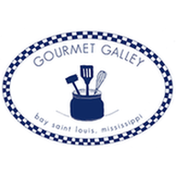



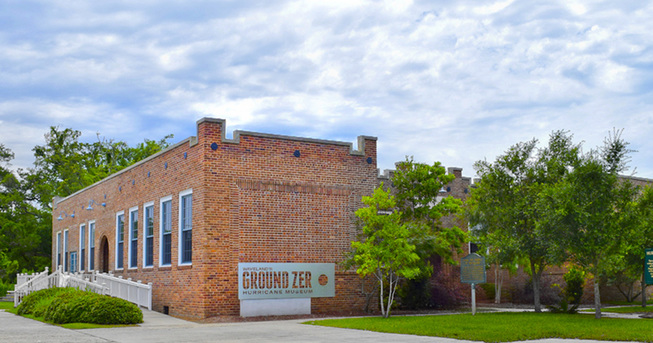




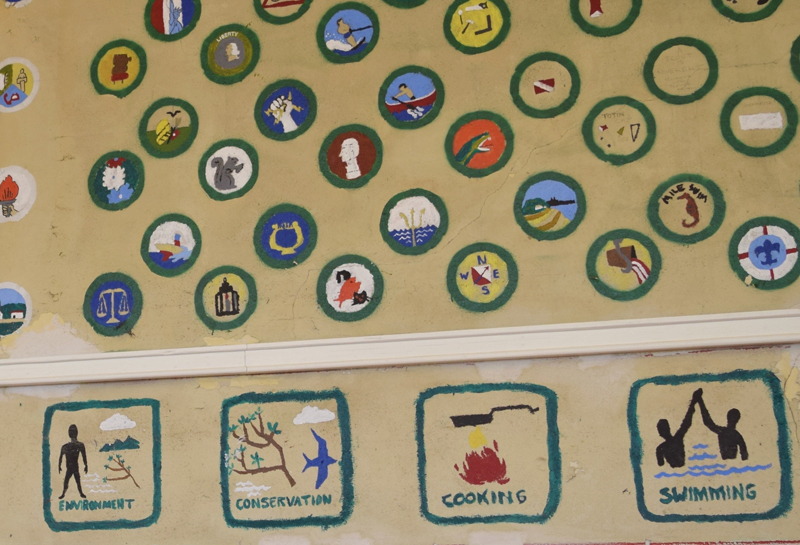





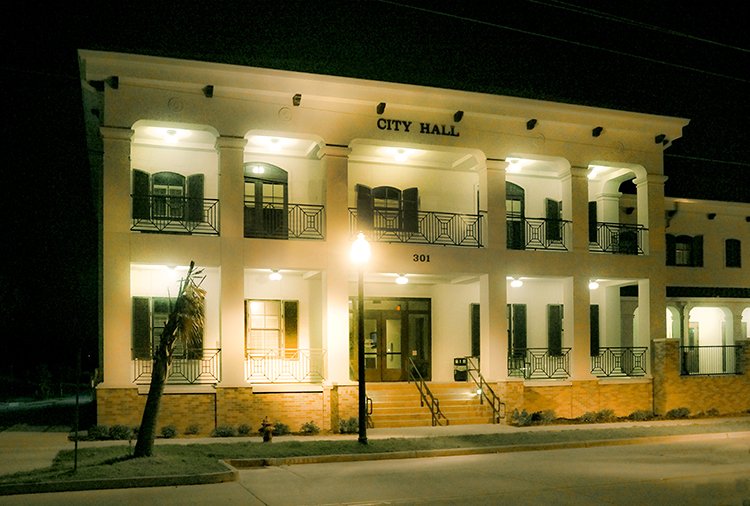







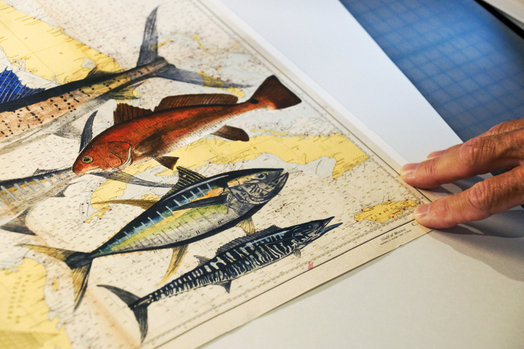












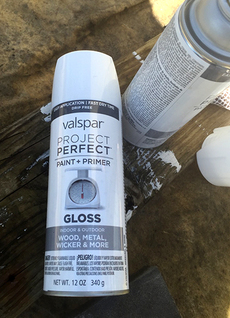




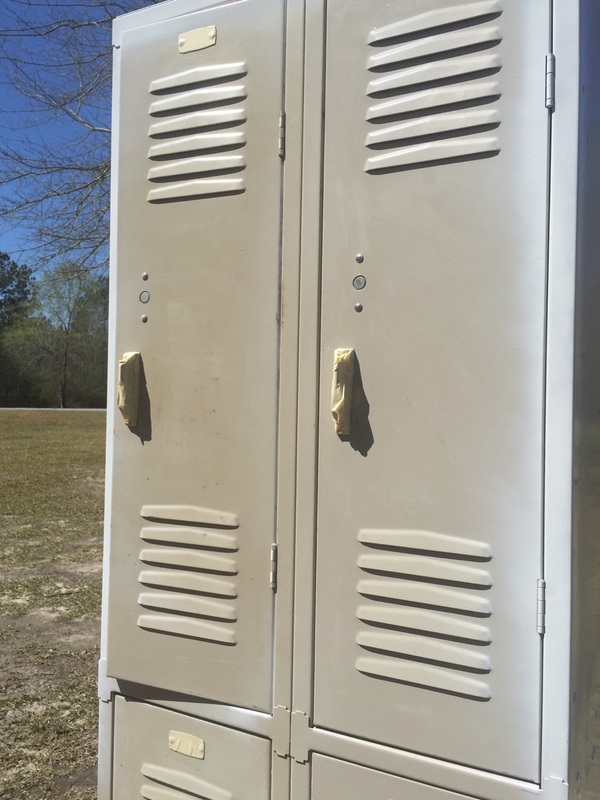



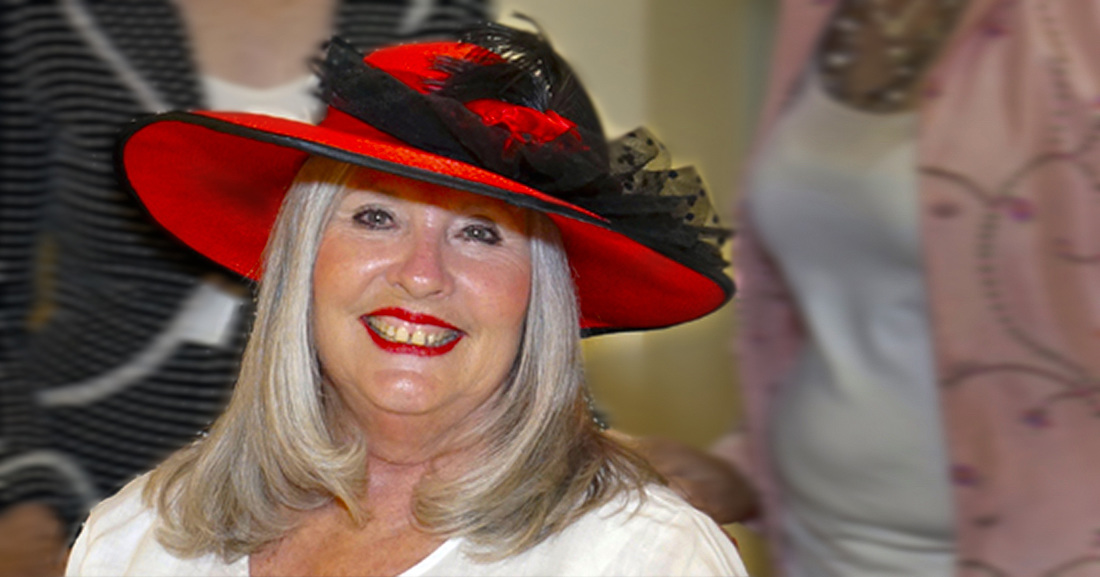








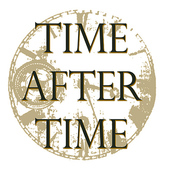








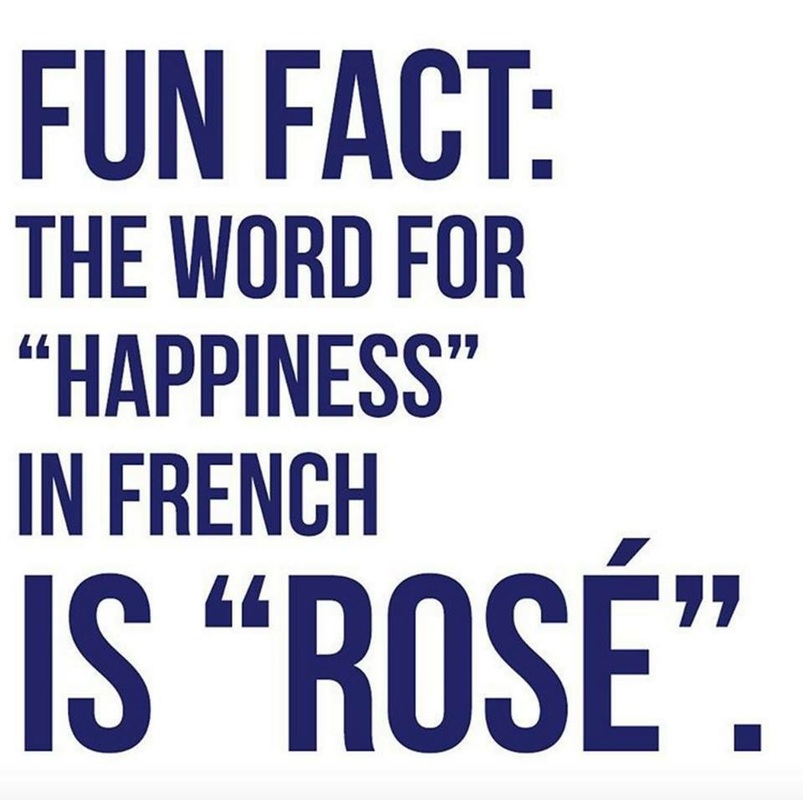





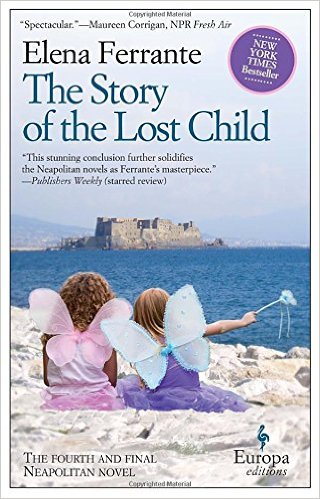










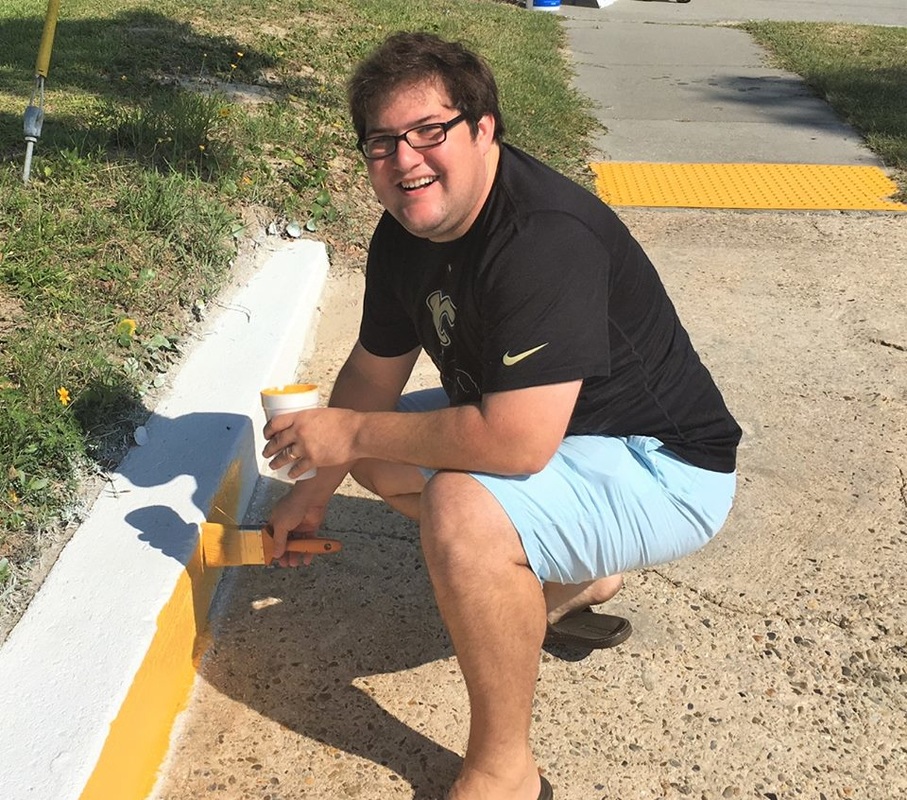








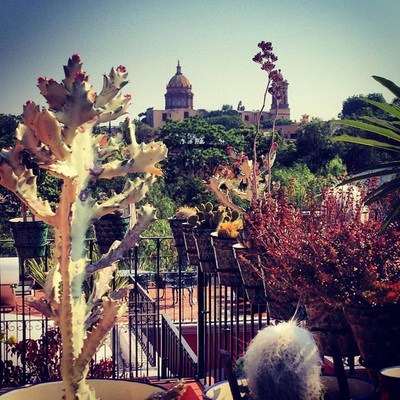









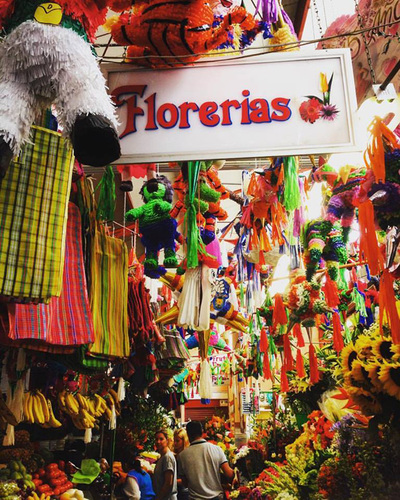
































 RSS Feed
RSS Feed























